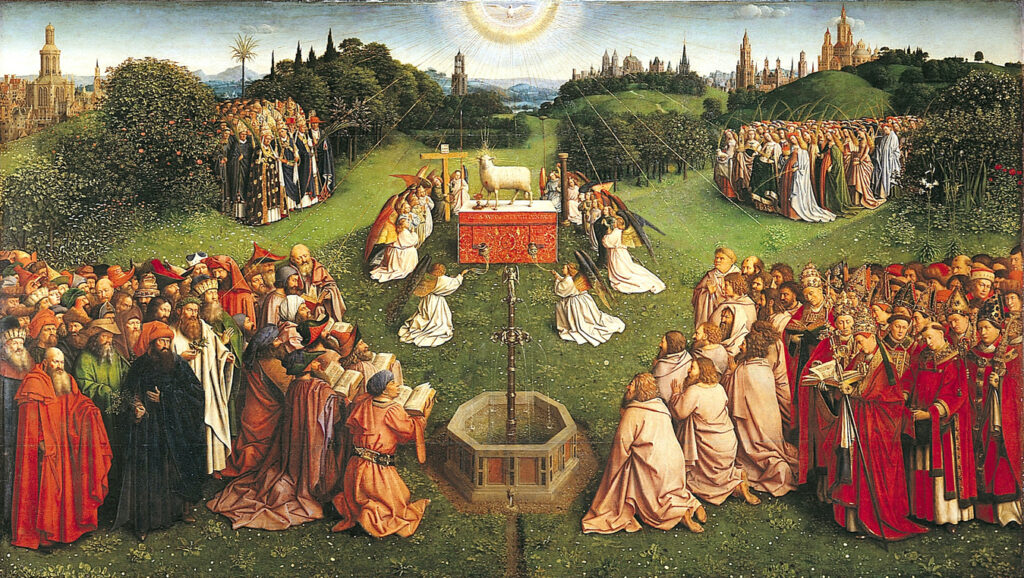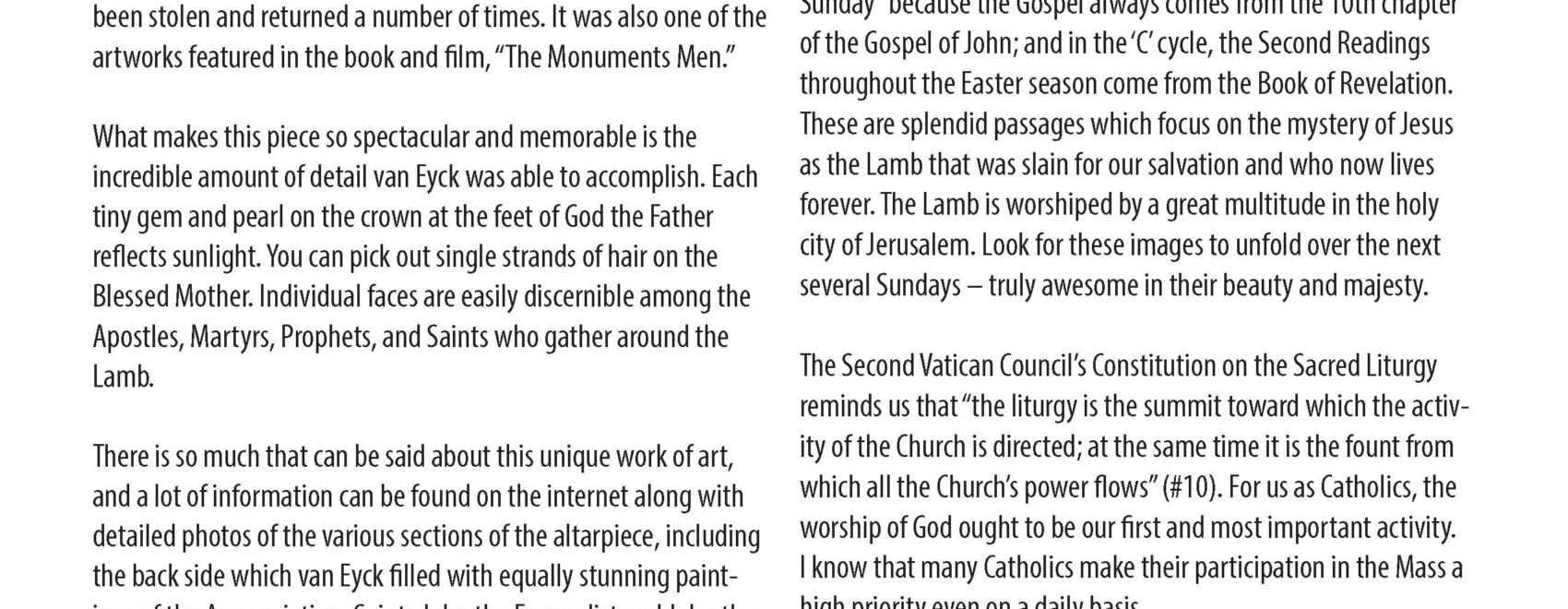
Dear Parishioners and Friends,
I have been reading a fascinating book titled Stealing the Mystic Lamb by Noah Charney which tells the story of one of the world’s greatest works of art, “The Adoration of the Mystic Lamb” by Jan van Eyck, completed in 1432 for St. Bavo Cathedral in Ghent, Belgium. It is a very large work, probably 10 feet tall and 12 feet wide, and is currently housed in a special exhibition room in St. Bavo where I was able to view it on a trip to Brussels a number of years ago. The altarpiece has had a very checkered history, having been stolen and returned a number of times. It was also one of the artworks featured in the book and film, “The Monuments Men.”

What makes this piece so spectacular and memorable is the incredible amount of detail van Eyck was able to accomplish. Each tiny gem and pearl on the crown at the feet of God the Father reflects sunlight. You can pick out single strands of hair on the Blessed Mother. Individual faces are easily discernible among the Apostles, Martyrs, Prophets, and Saints who gather around the Lamb.
There is so much that can be said about this unique work of art, and a lot of information can be found on the internet along with detailed photos of the various sections of the altarpiece, including the back side which van Eyck filled with equally stunning paintings of the Annunciation, Saints John the Evangelist and John the Baptist, as well as the donors of the altarpiece.
Apart from its artistic and aesthetic qualities, the Ghent Altarpiece is rich in theological and biblical themes. The focal point of the work is found in the lower central panel which depicts the title of the overall work. There we see the Lamb of God standing on an altar as a chalice captures blood flowing from the lamb’s body. Angels surround the altar with censers and symbols of the Passion of Christ. A bit lower we see an octagonal-shaped fountain filled with clear water, from which spigots allow the water to flow out from four sides, reminiscent of the four rivers which flowed from the Garden of Eden. The entire scene reflects what we hear in today’s second reading from the Book of Revelation: For the Lamb who is in the center of the throne will shepherd them and lead them to springs of life-giving water, and God will wipe away every tear from their eyes (Rev. 7:17).
The Fourth Sunday of Easter is traditionally called “Good Shepherd Sunday” because the Gospel always comes from the 10th chapter of the Gospel of John; and in the ‘C’ cycle, the Second Readings throughout the Easter season come from the Book of Revelation. These are splendid passages which focus on the mystery of Jesus as the Lamb that was slain for our salvation and who now lives forever. The Lamb is worshiped by a great multitude in the holy city of Jerusalem. Look for these images to unfold over the next several Sundays – truly awesome in their beauty and majesty.
The Second Vatican Council’s Constitution on the Sacred Liturgy reminds us that “the liturgy is the summit toward which the activity of the Church is directed; at the same time it is the fount from which all the Church’s power flows” (#10). For us as Catholics, the worship of God ought to be our first and most important activity. I know that many Catholics make their participation in the Mass a high priority even on a daily basis.
My hope is that you will always feel welcome to the celebration of the Mass, the source and summit of our lives, eager to enter once again into the mystery of God’s abiding presence and God’s divine transcendence. Perhaps you will see yourself among that throng depicted in the Ghent Altarpiece, or even better, the great multitude in the Book of Revelation, “which no one can count, from every nation, race, people, and tongue, who stand before the throne and before the Lamb” slain for our salvation.
Blessings on your week ahead.
Fr. Tim Shreenan, O.F.M.
Pastor

